A searchlight with long runtime and sustainable high brightness? That’s the description of the new Cyansky Carbon, whose Kickstarter campaign was launched today.
I already had the opportunity to test the flashlight extensively over the past few weeks. I was particularly curious about the LiFePO₄ battery and the stated runtime of four hours at 2000 lm.
You can find the German version of this review on my website: SammysHP Blog › Cyansky Carbon
The flashlight was provided by the manufacturer for this review. Thank you very much!
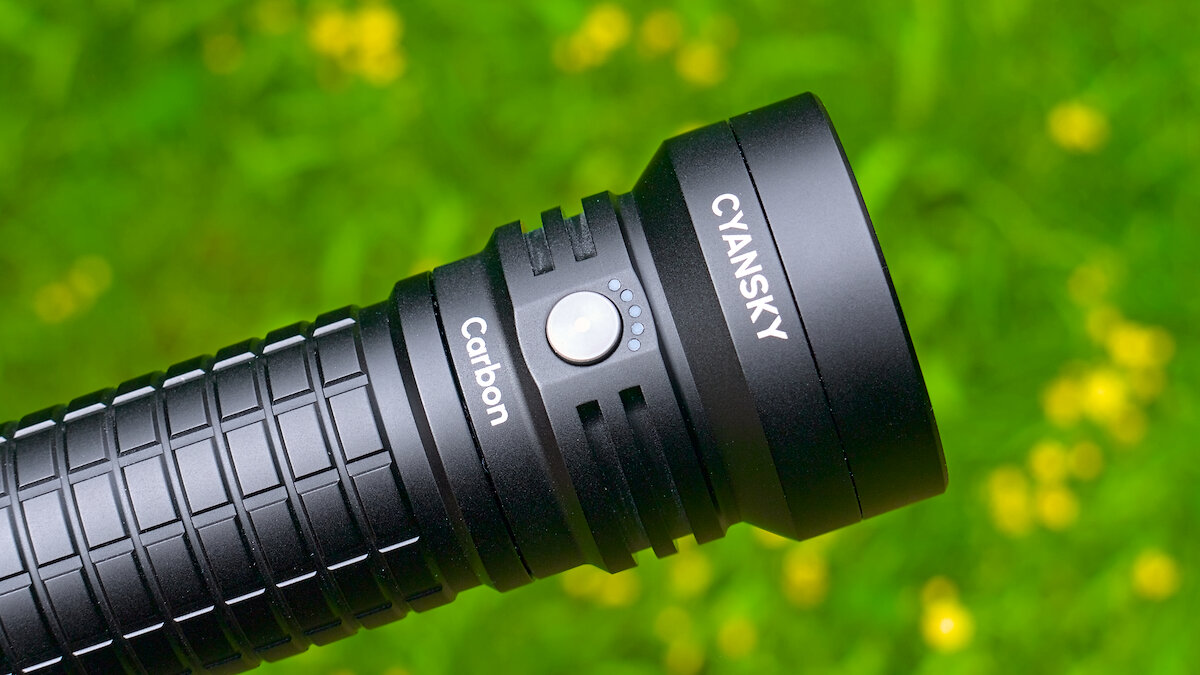
Overview of hardware
The flashlight comes in a cyan-colored box that matches the name. All you need to do after unboxing is to remove an insulating disc from the battery.
- Cyansky “BL3815” 38121 LiFePO₄ battery with 15 000 mAh (button-top, 3.244 V at arrival)
- Lanyard
- 2x replacement o-ring
- USB-C to USB-C charging cable
- Tailcap with ¼" attachment and glass breaker
- Manual (EN, CN)
The most interesting feature compared to other flashlights is the LiFePO₄ battery. There are very few flashlights that use a LiFePO₄ battery and even fewer models that use a replaceable, commercially available cylindrical cell. Lithium iron phosphate (“LFP”) batteries have clear advantages: they are safer than Li-ion batteries and have a significantly longer lifetime, with some having more than 10,000 charging cycles!
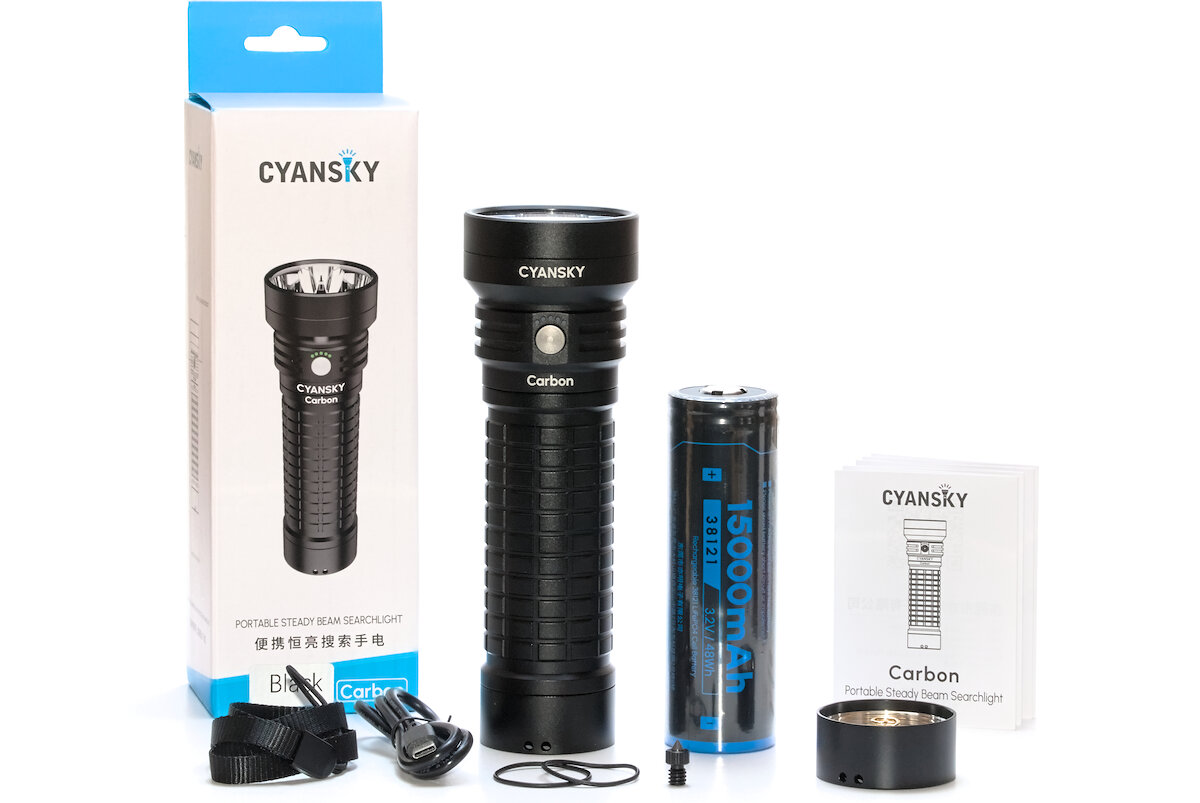
After unboxing, I was surprised at how big the Carbon feels. A length of 184 mm doesn’t sound like much, but it is. You can also feel the 45 mm diameter in your hand, as well as the weight of over 600 g.
Length: 184 mm
Diameter (head): 60.0 mm
Diameter (battery tube): 44.8 mm
Diameter (tailcap): 46.8 mm
Weight (without battery): 283 g
Weight (38121 battery): 342 g
Weight (total): 625 g
Compared to “normal” flashlights, the Carbon is a giant. However, it also has a high battery capacity, which has a positive effect on the runtime. When it comes to size, you always have to consider the intended use.
Wurkkos TS26S | Cyansky Carbon | Emisar D4S:
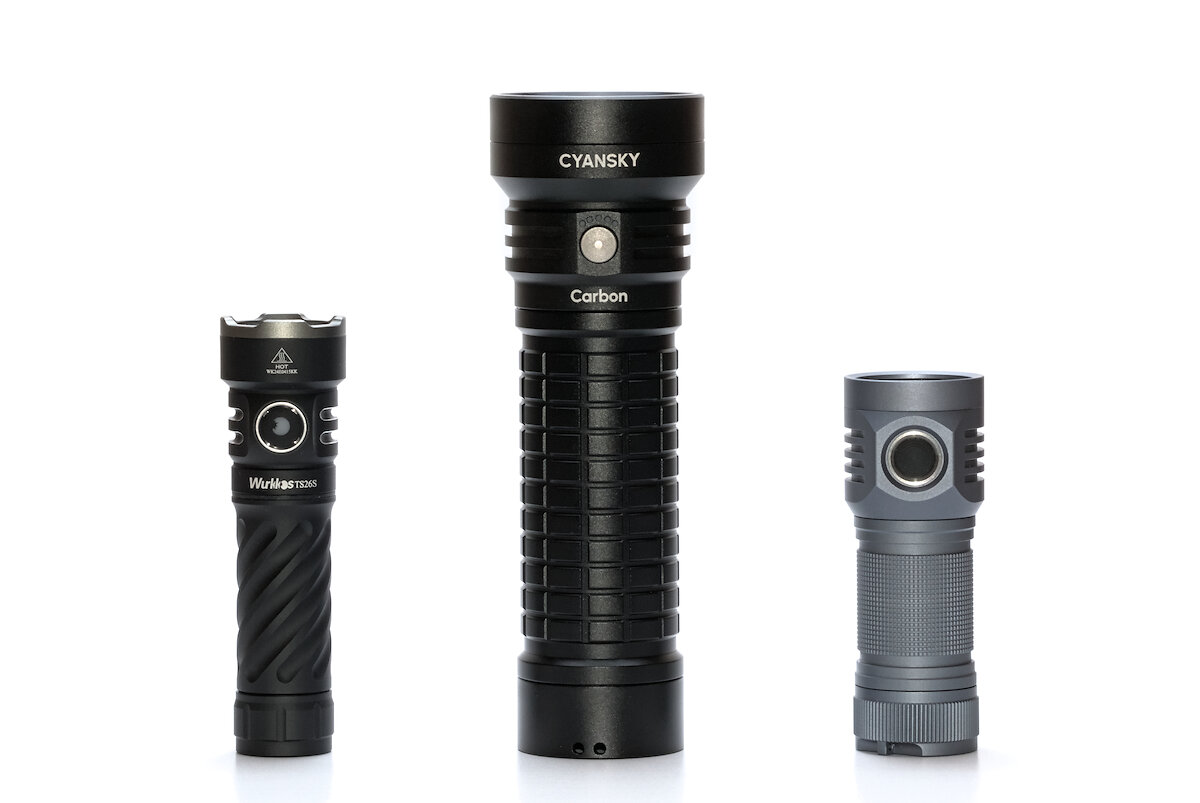
This becomes particularly obvious when comparing the 38121 battery with other common battery sizes. In the following picture it can be seen with a 18650 and a 21700 battery:
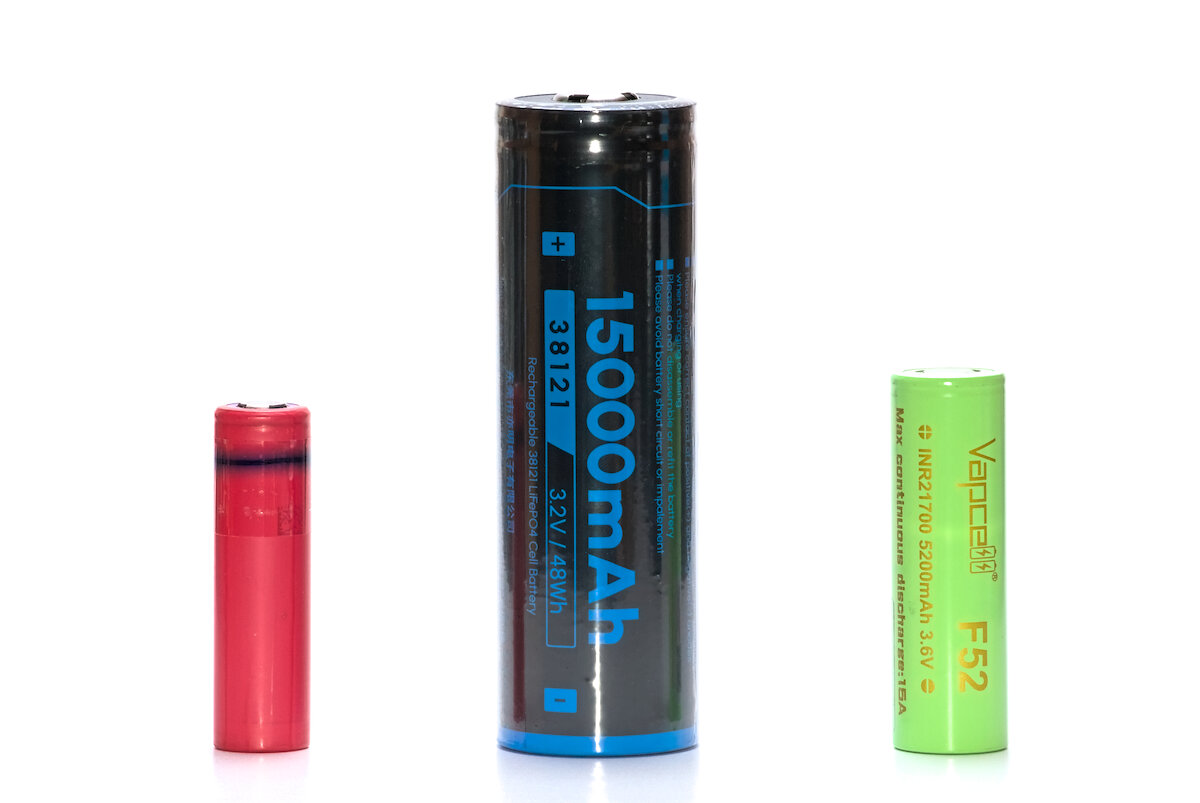
The Carbon comes in a classic, mostly simple design. The battery tube is segmented into small rectangles, which improves grip. Nevertheless I would have liked a slightly more grippy surface.
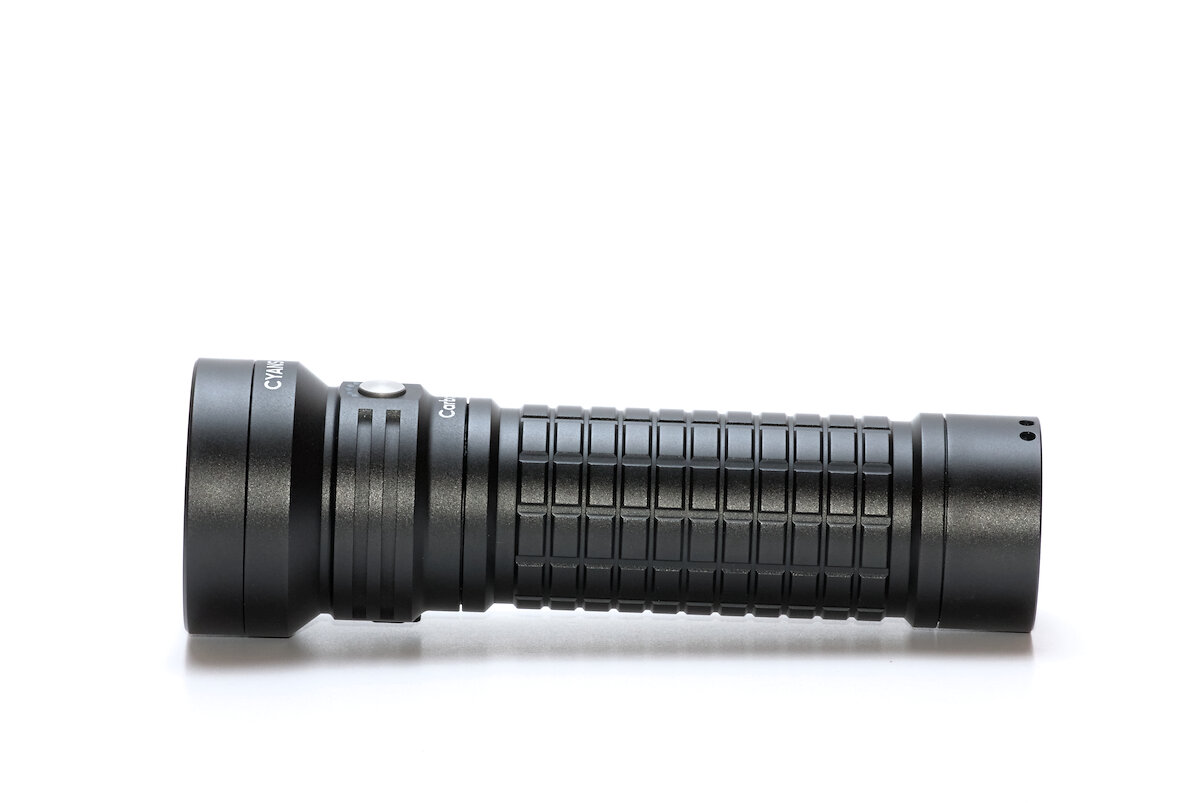
If you place the Carbon on a flat surface, it immediately rolls away. A few flat sides on the head or tailcap could solve this problem.
A lanyard or carrying strap can be attached to the tailcap. The holes are positioned so that they do not interfere with tailstand.
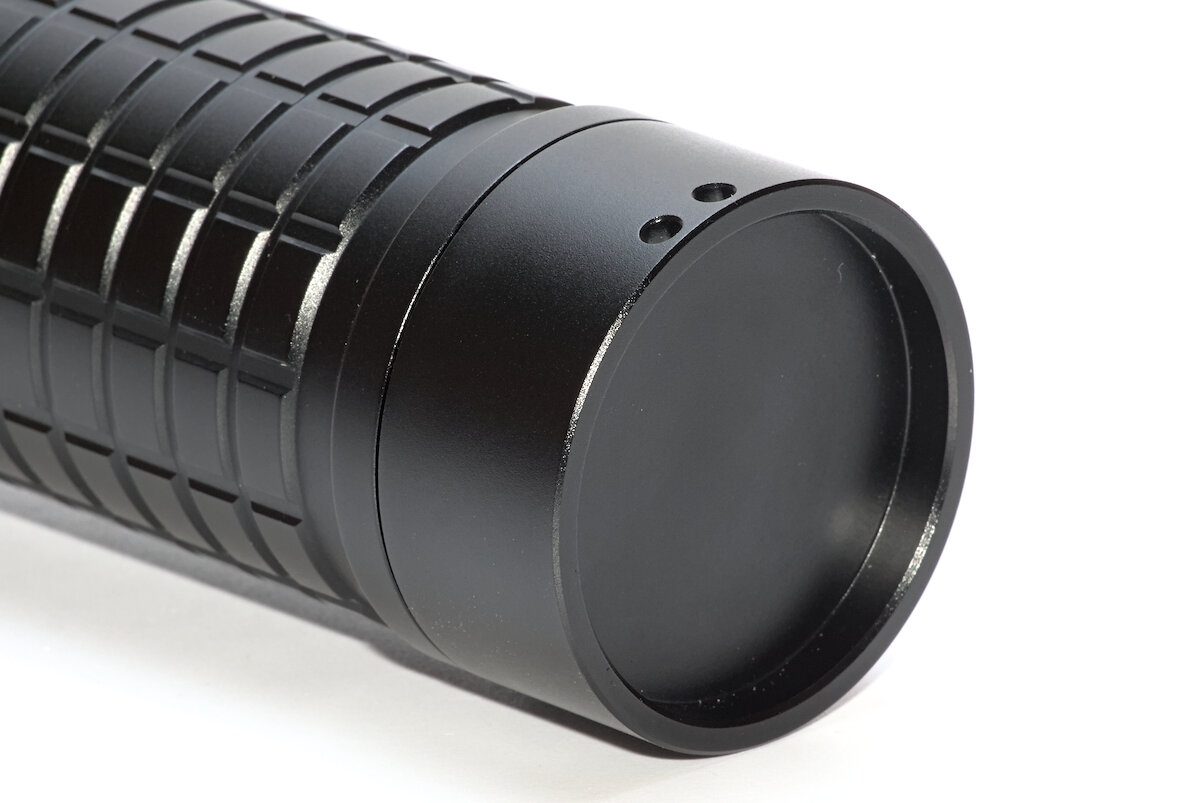
The final version will probably come with a different version of the tailcap, which has a ¼" thread (“tripod mount”) in the middle. A screw-in glass breaker is included. Alternatively, the flashlight can be attached to a tripod to serve as stationary lighting.
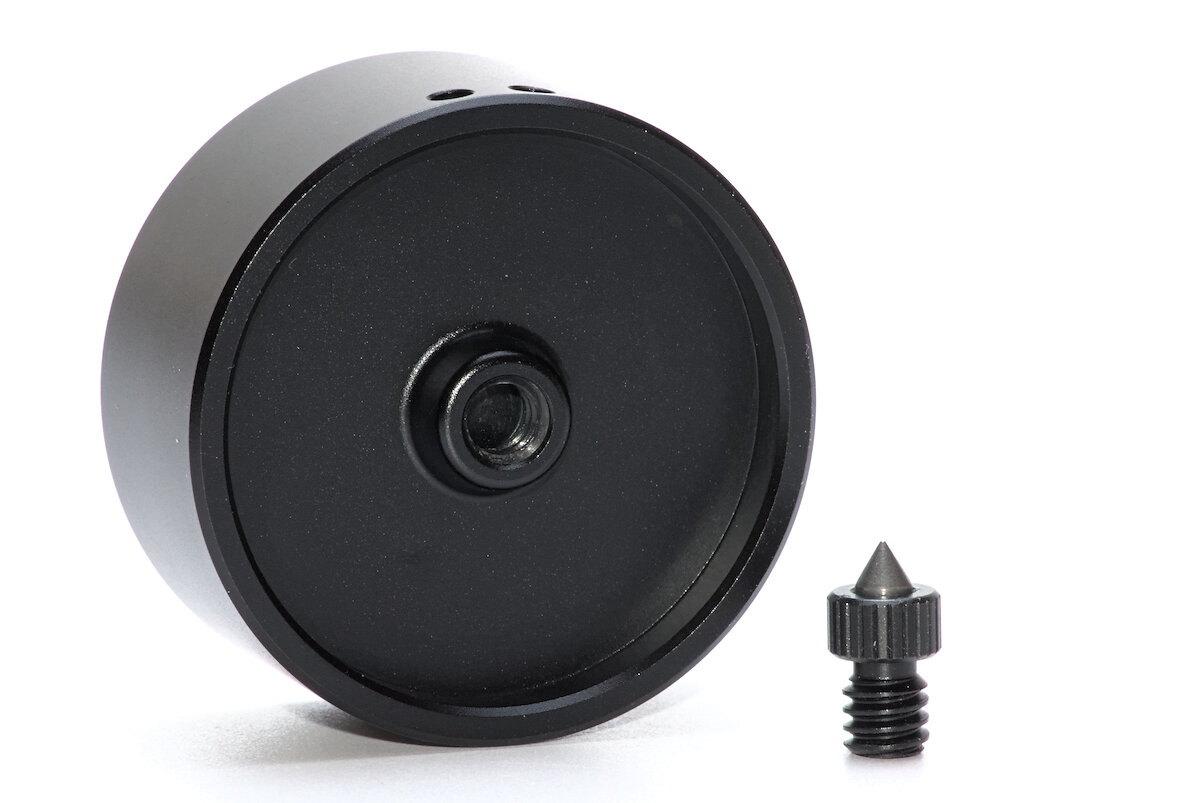
The battery can be charged directly in the flashlight via a USB-C port on the head. The Carbon supports fast charging via USB PD and QC with up to 12 V. In this case, the battery is charged with 16 W so that it is fully charged after just over four hours. The five status LEDs above the button indicate the charging progress. While charging the flashlight can be used without restrictions.
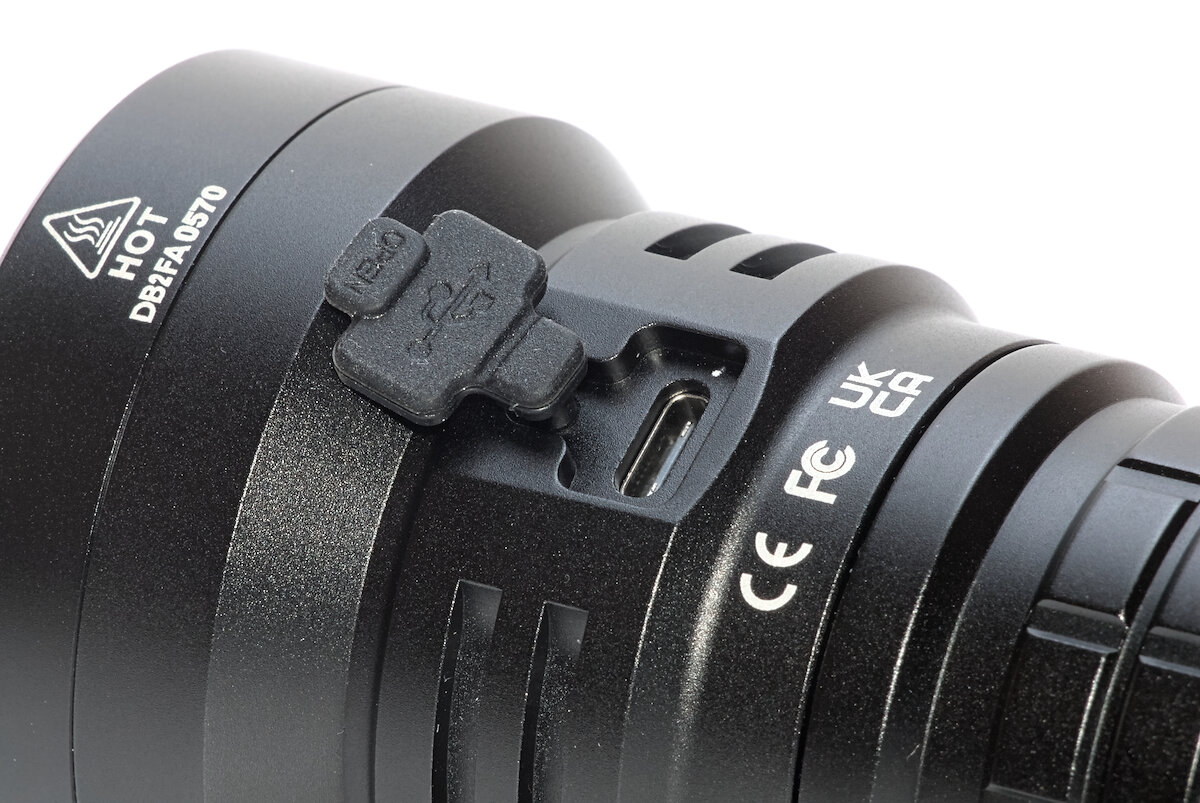
A silicone cover protects the port from dirt and water. It is slightly raised and has a protruding flap to make it easier to open. However, there is also an increased risk of getting caught on it, which can cause the cover to open unintentionally.
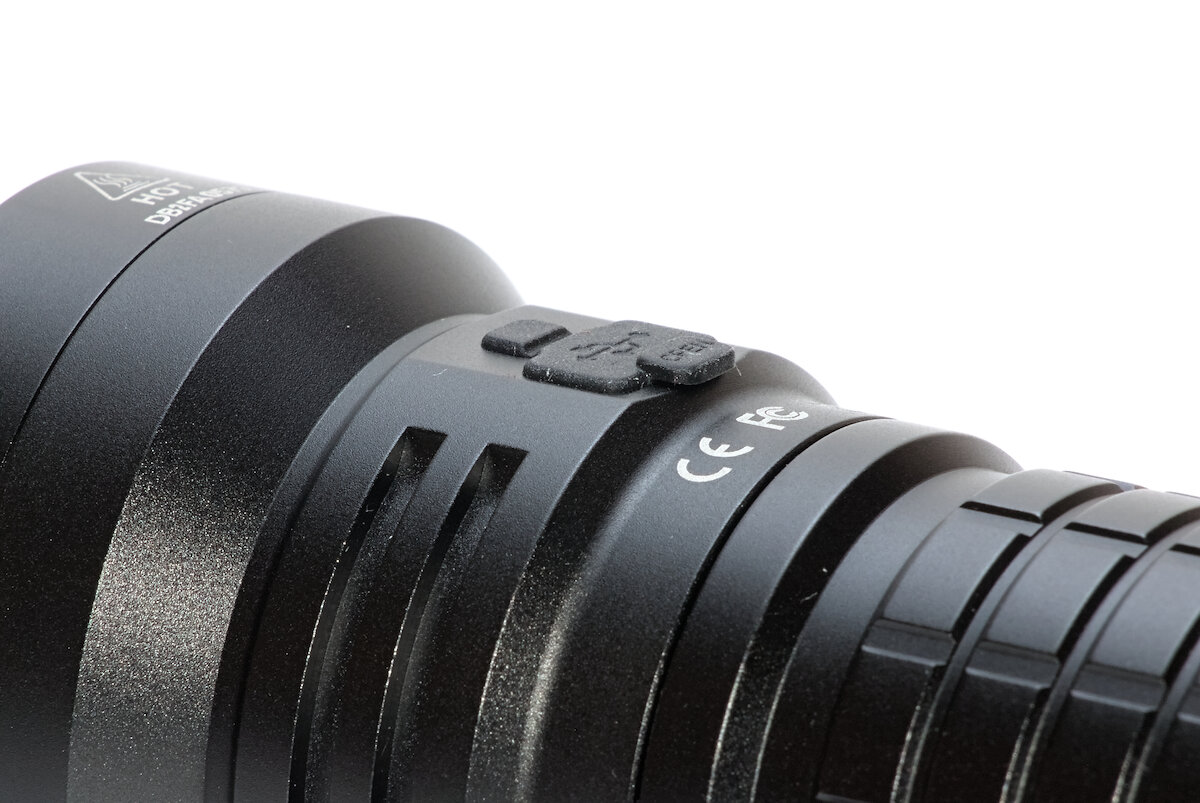
There is a strong spring both on the head and in the tailcap. The threads are sealed with an O-ring. It is specified as IP68 and the flashlight can be submerged up to two meters under water. It is also designed to withstand drops of up to one meter.
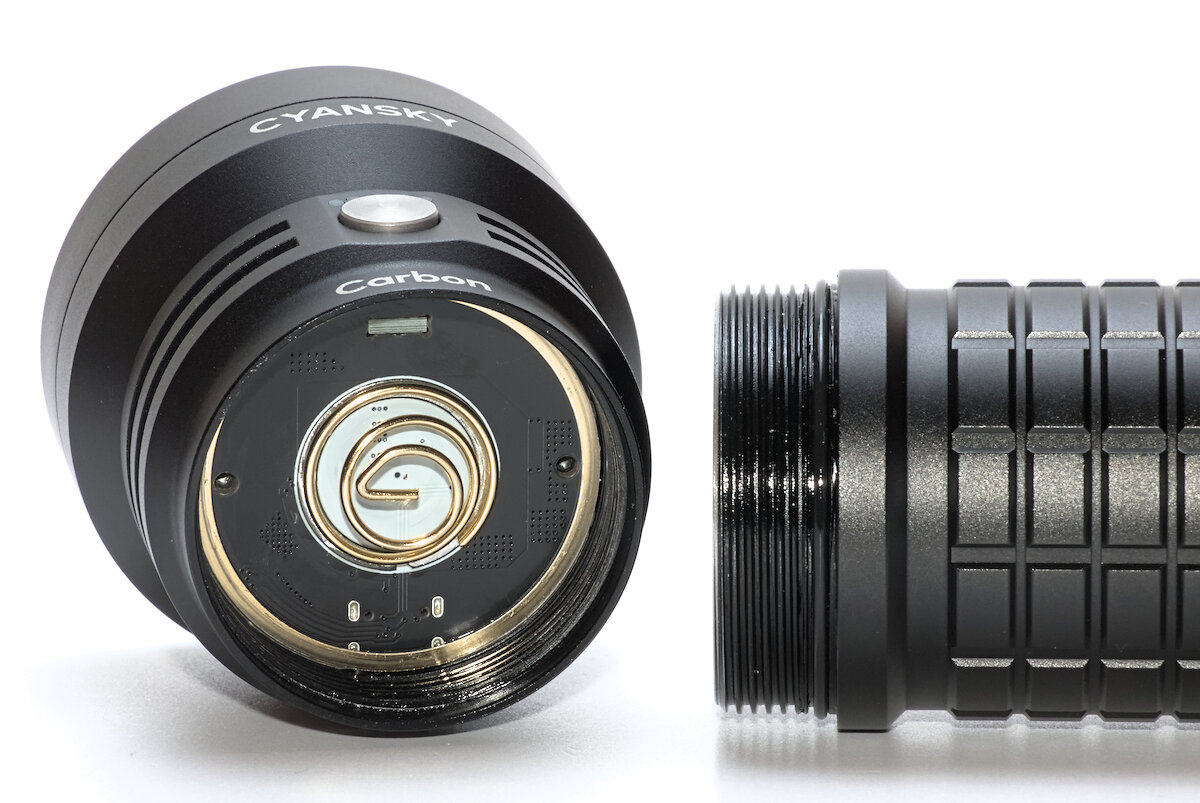

The overall build quality is high. Only the cooling fins are a little sharp-edged. Strangely enough, the tailcap on my model could not be unscrewed. It was either very well glued or jammed. Even a strap wrench and heating it up to 100 °C couldn’t change this.
User interface
The flashlight is controlled via a button on the side of the head. It is made of metal and has a slightly ribbed surface. It has a precise actuation point with a short switching distance. Because it slightly protrudes from the body, there is a risk of it being pressed accidentally (in the pocket) and the flashlight being switched on unintentionally.
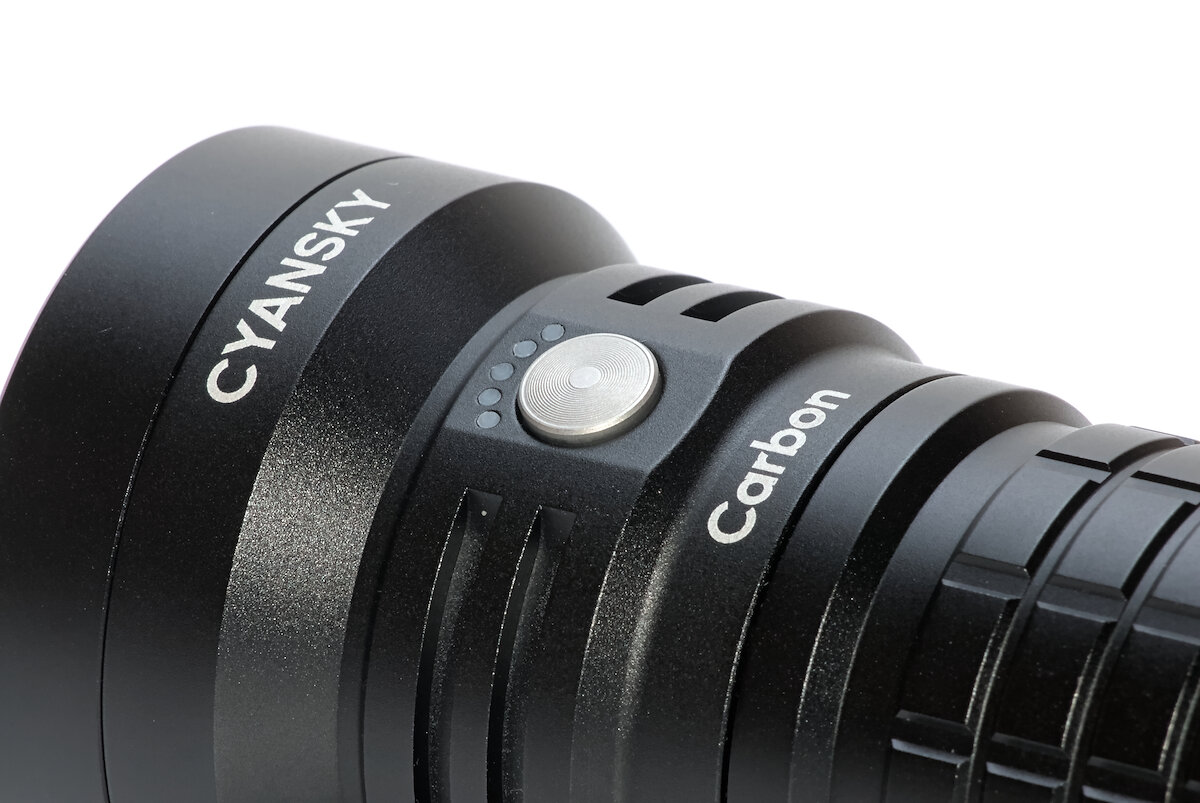
Operation is simple and easy to understand: Short press to switch on and off, hold to change the brightness. There is direct access to the lowest and highest levels. It also comes with a strobe and SOS mode.
| State | Action | Function |
|---|---|---|
| Off | 1 click | Turn on (last used brightness, except Eco and Turbo) |
| Off | 2 click | Turbo |
| Off | 3 click | Strobe |
| Off | 4 click | Lockout |
| Off | Hold | Eco |
| On | 1 click | Turn off |
| On | 2 click | Turbo |
| On | 3 click | Strobe |
| On | Hold | Increase brightness (Low → Medium → High) |
| Strobe | 3 click | Switch between Strobe and SOS |
| Lockout | 2 click | Unlock and turn on in Turbo |
| Lockout | 3 click | Unlock and temporarily turn on in Turbo |
| Lockout | 4 click | Unlock and turn on in last used brightness |
The lockout seems to contain a small bug. If the flashlight is locked, it can be unlocked regularly by clicking four times. It confirms this by flashing twice and then switches to the last brightness used. If you press twice instead, it also flashes, but then switches to turbo. This function is not described in the instructions.
It gets even stranger with a triple click. It flashes twice and switches to turbo. After switching off, it flashes twice again and is locked again. Now a triple click no longer has any effect, but only after a further repetition.
If you are at the “Eco” level and hold the button, the brightness is not increased gradually via “Low”, but you end up directly at the last brightness used in the main group (Low, Medium or High). This means that you may be blinded directly by “High” after “Eco”.
The frequency of the strobe changes every two seconds between 14 and 8 Hz. The SOS signal (rather “S-O-S”) takes 11 seconds for one cycle.
Strobe:
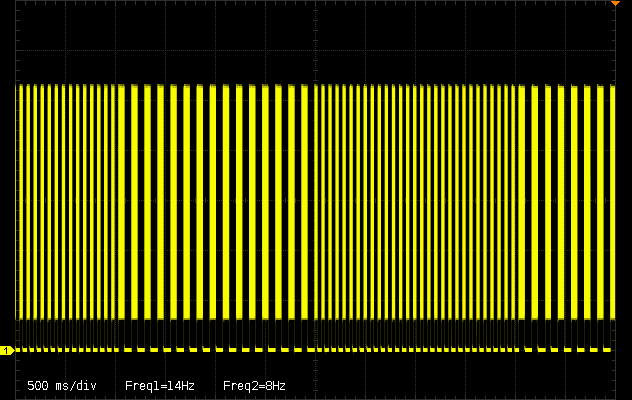
SOS:
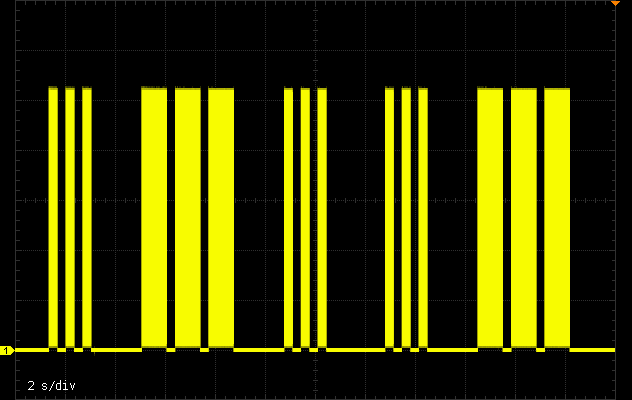
Five green LEDs above the button indicate the battery level for three seconds after switching it on. Pretty convenient, as you don’t have to wait for a flashing sequence or similar. It’s just a shame that these dedicated status LEDs are not active all the time while the flashlight is switched on.
| Color | State of charge | Voltage¹ |
|---|---|---|
| 5x green | 100% | > 3.30 V |
| 4x green | 80% – 99% | 3.10 V – 3.30 V |
| 3x green | 60% – 80% | 3.00 V – 3.10 V |
| 2x green | 40% – 60% | 2.90 V – 3.00 V |
| 1x green | 20% – 40% | 2.75 V – 2.90 V |
| red flashing | < 20% | < 2.75 V |
¹ Measured
If the battery level is critical, the left status LED starts to flash red when the flashlight is turned on. At the same time the (white) main LEDs flash three times every three minutes. In addition the brightness is reduced to the “Low” level – even if the lower “Eco” level was previously used (i.e. the brightness is increased).
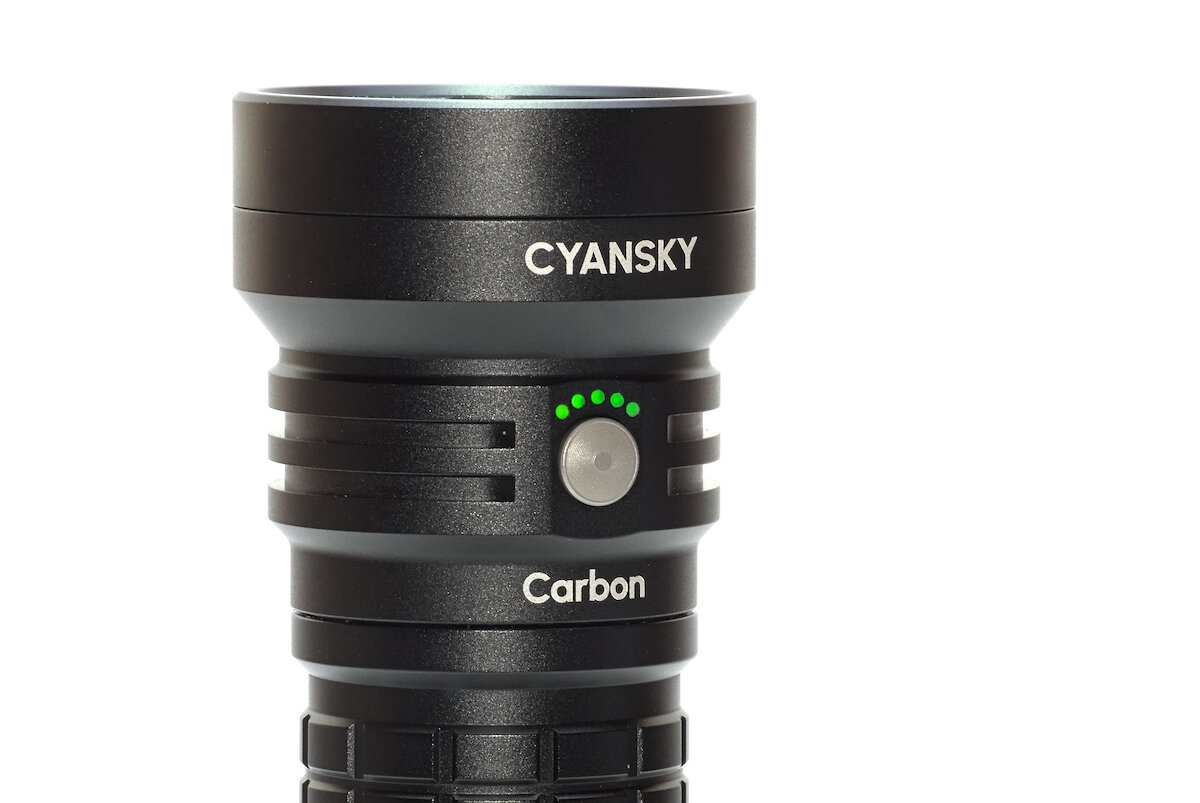
The Carbon is definitely not for small hands. You may have to hold it far at the front to reach the button. It probably depends on the scenario whether you want to hold it for a long time, as it could be a bit tiring in the long run. In the dark, it could take some time to find the button by feel. It would have been nice to make it easier to find (and protect against accidental activation!) by having it slightly recessed.
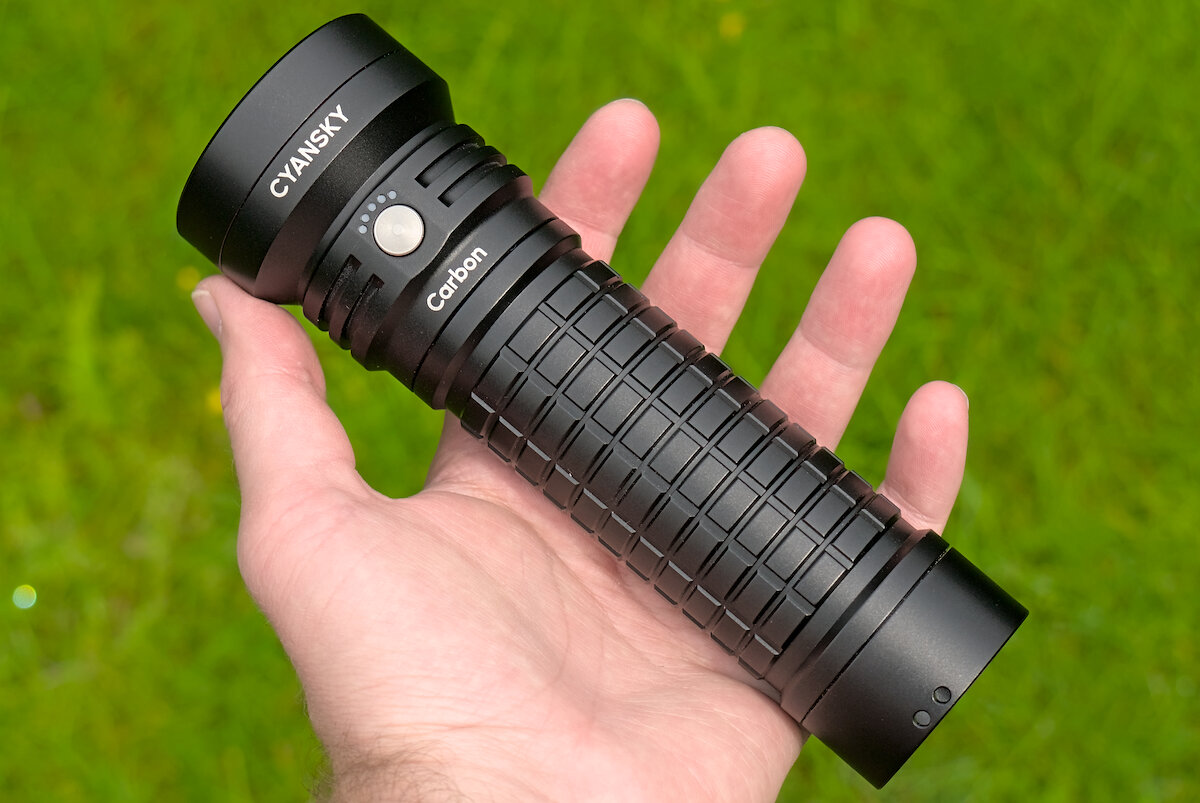
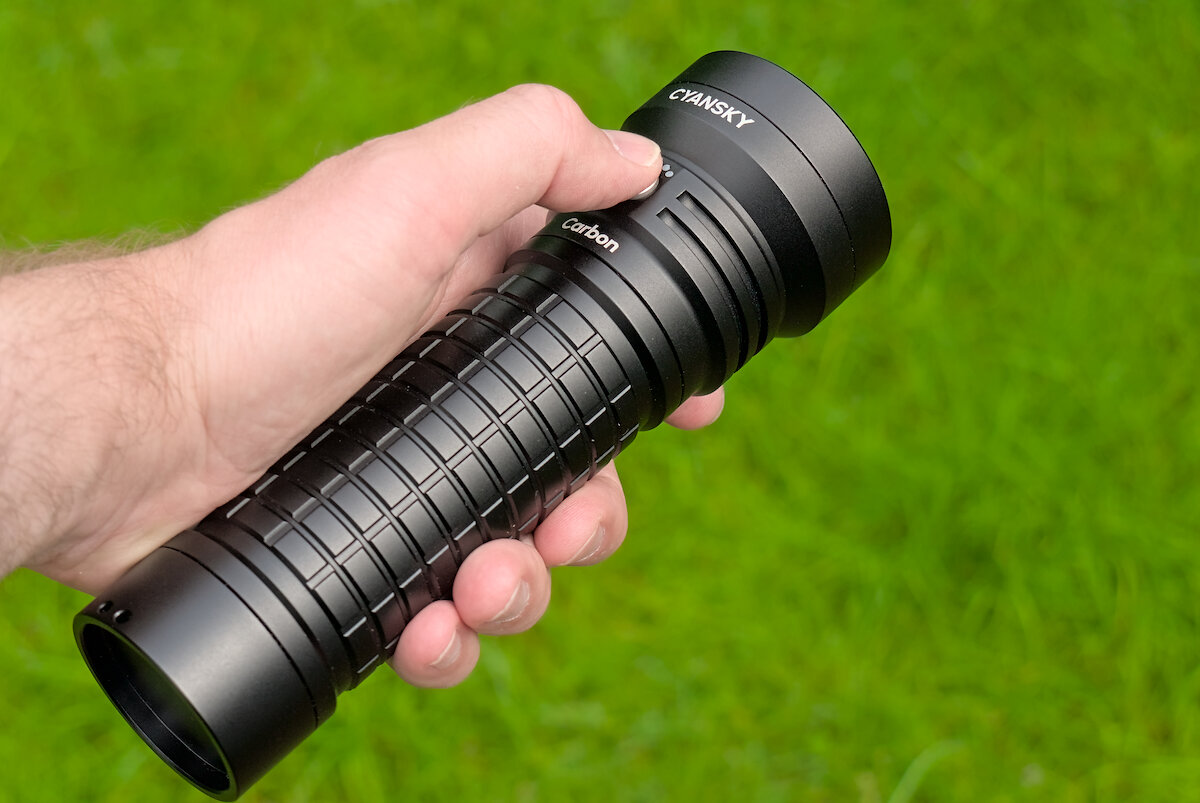
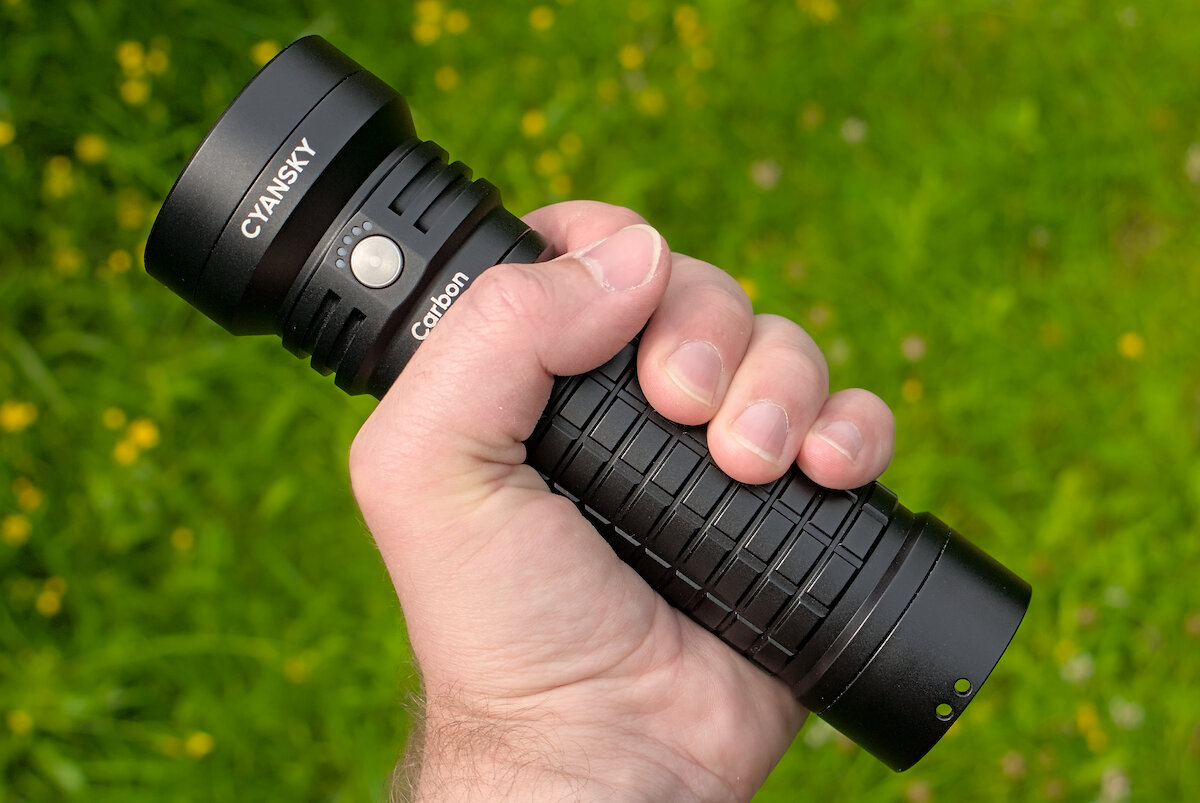
Alternatively the Carbon can be used stationary by attaching it to a tripod using the ¼" mount. Unfortunately I cannot demonstrate this as the tailcap on my model could not be unscrewed. It would have been nice to have a 1/4" mount on the side of the head as well, like it is the case with the BLF LT1 and the Klarus XT12GT Pro.
The Carbon can also be used as a powerbank via the USB-C port. The large battery would be enough to charge a smartphone several times. However, according to the instructions, the powerbank function only works down to 3.0 V and half of the capacity remains unused. My guess is that a regulator was used that is designed for Li-ion batteries and therefore for higher voltages.
Illumination
Four cool white Luminus SST-20 LEDs are installed in the Carbon. Unfortunately they couldn’t impress me. SST-20 in 5000 K and 6500 K are known to have a slight green tint, and that is the case here in the Carbon. Their color rendering is also rather poor. There would be plenty of alternatives: A good candidate could be the Luminus SFT-40, which is well suited for throwers thanks to its small LES (light-emitting surface) and relatively high brightness.
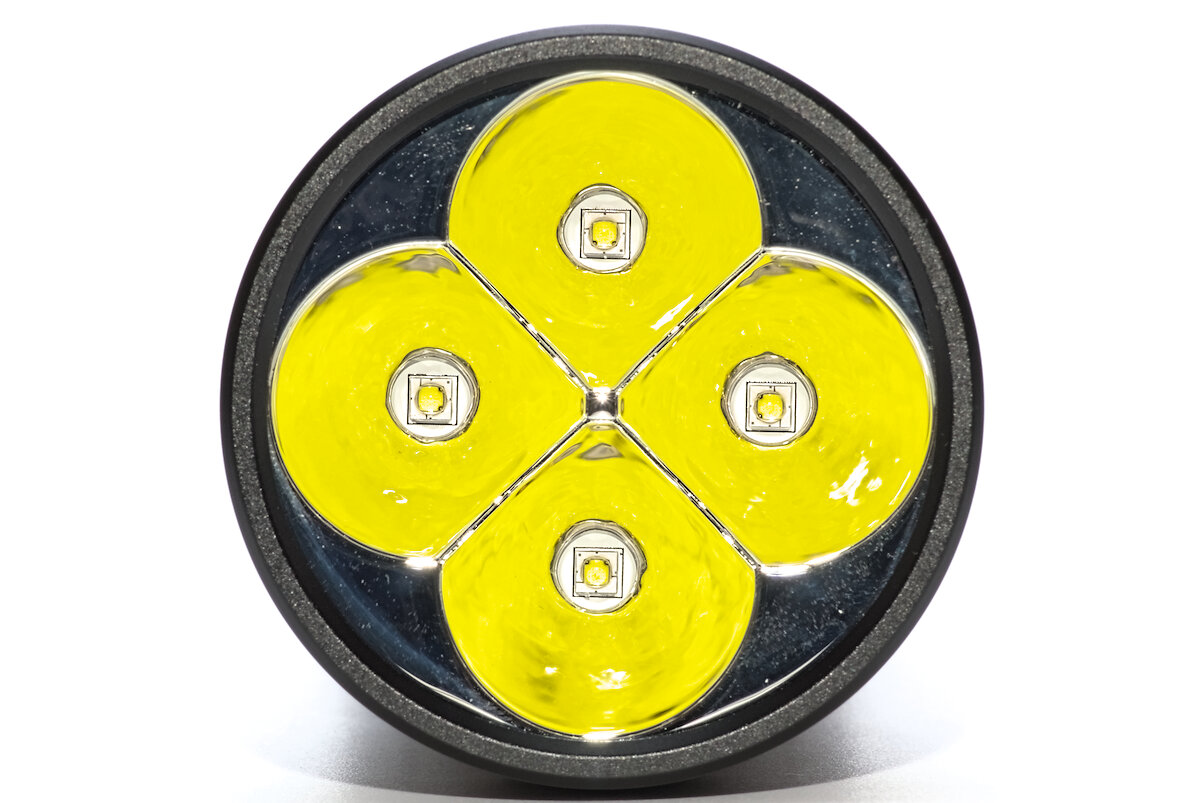
And in some way the Carbon is a thrower. The deep quad-reflector creates a narrow spot, surrounded by a wide and smooth corona. The lens has a magenta-colored anti-reflective coating.
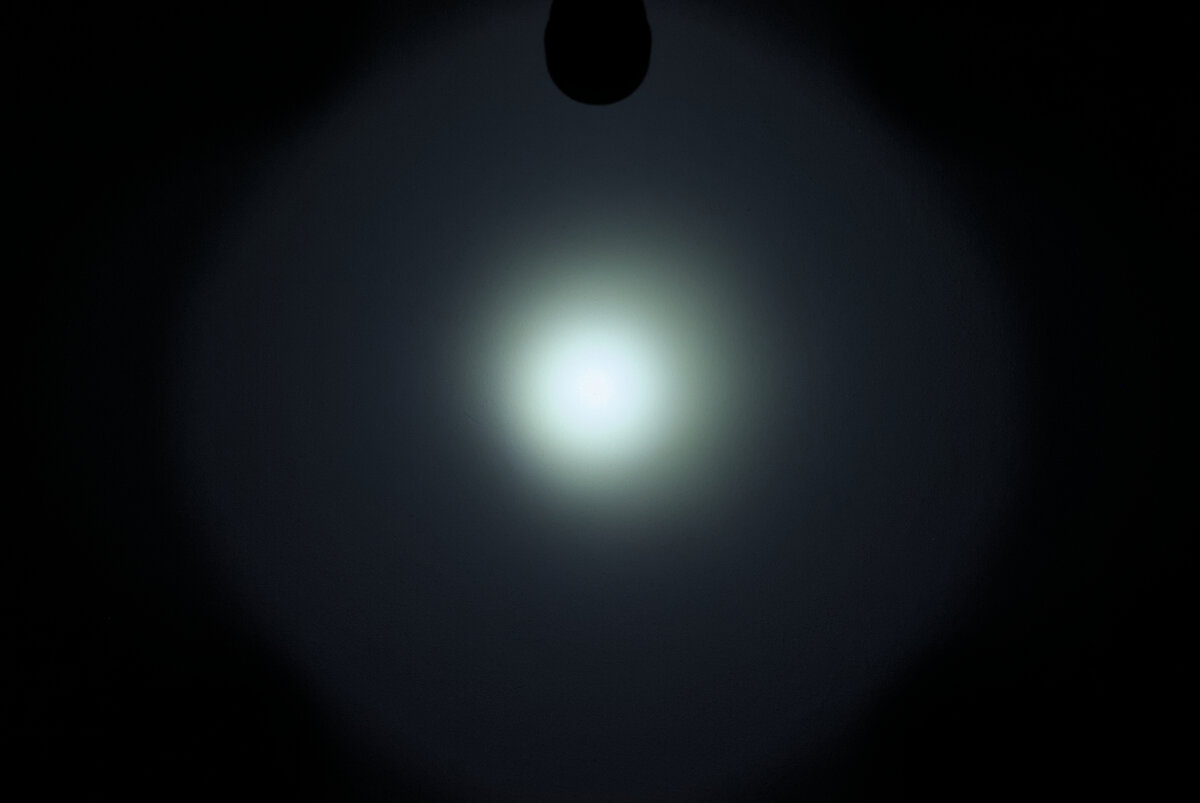
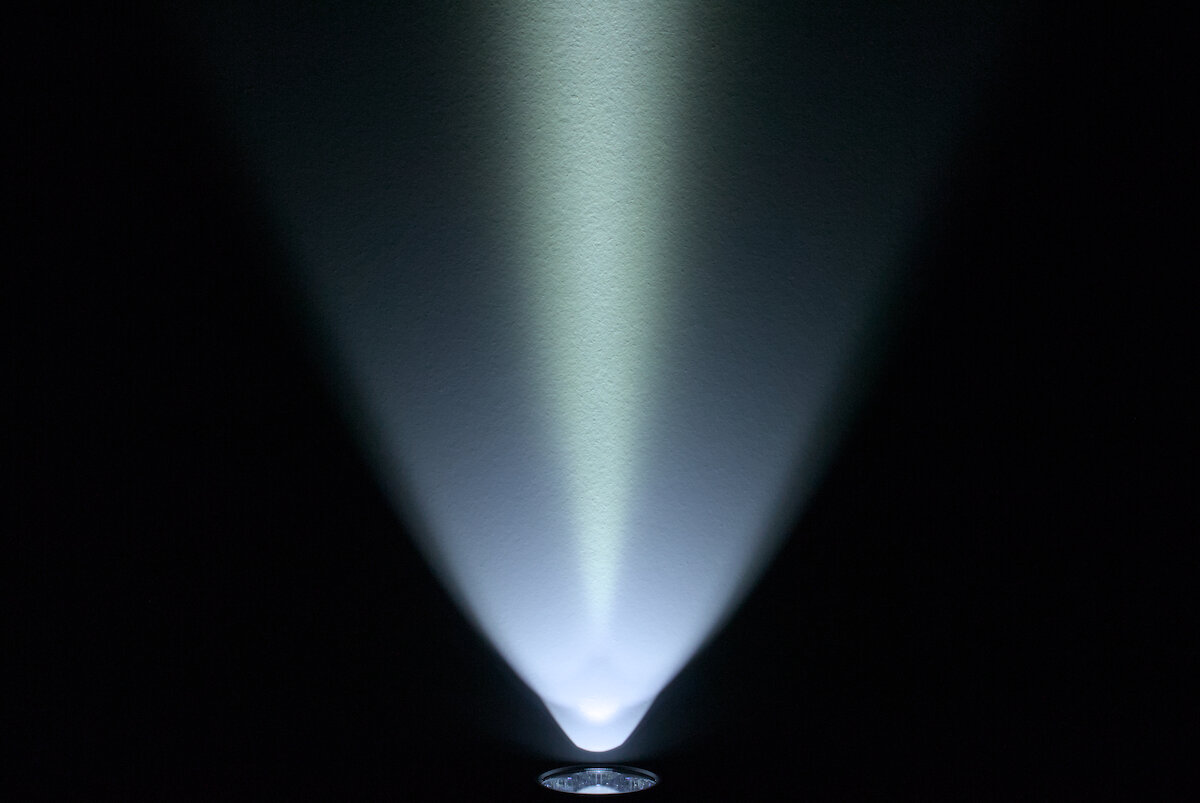
Due to the shape of the reflector, the spill has some shadowing. Whether these are a problem depends on the use case. In terms of the beam pattern the Carbon should be well suited for medium distances up to around 100 m.
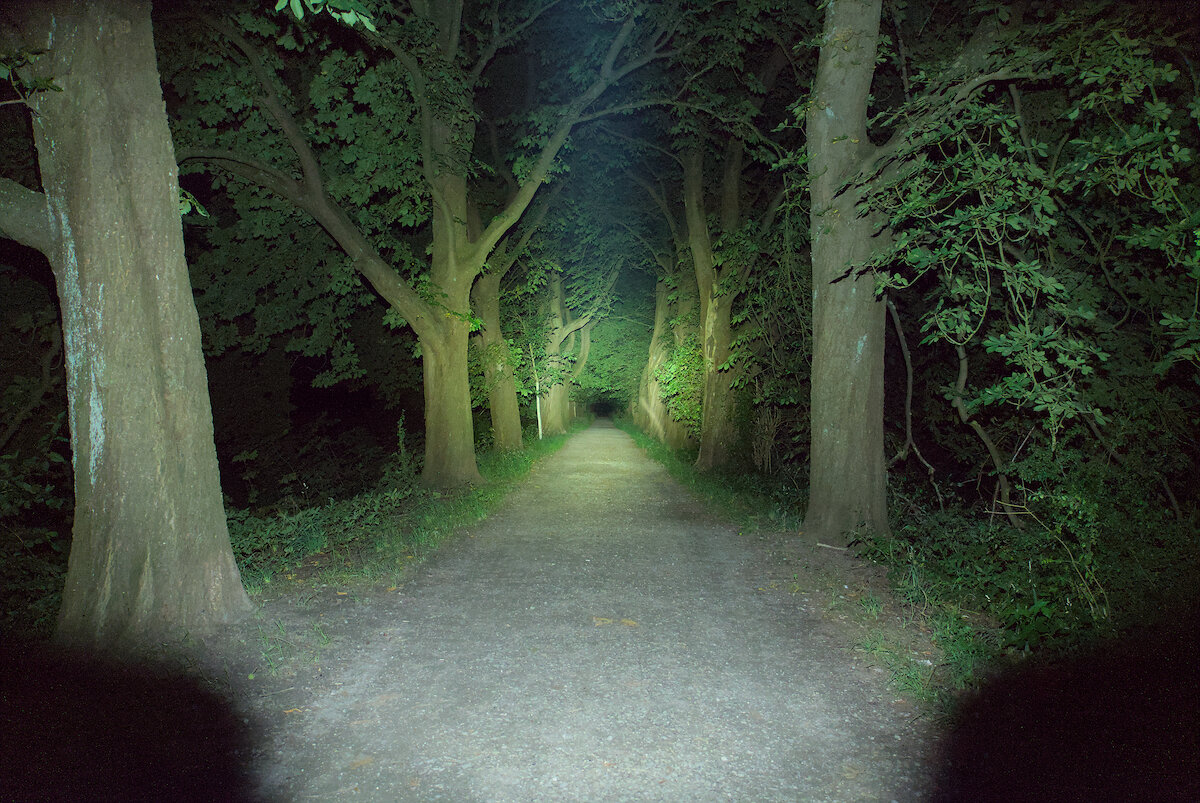
Driver and runtime
The Carbon is advertised as “2000 lumens of light for 4 hours without downshifting”. Although there are significantly smaller flashlights in this brightness class, they are not able to maintain 2000 lm for a longer period of time. So this would be a great achievement for the Carbon.
| Mode | Brightness¹ | Runtime¹ | Intensity¹ (Throw²) | Current³ |
|---|---|---|---|---|
| Turbo | 2000 lm | 4 h | 50 625 cd (450 m) | 4.20 A |
| High | 600 lm | 14 h | 13 225 cd (230 m) | 1.20 A |
| Medium | 150 lm | 50 h | 3 660 cd (121 m) | 0.36 A |
| Low | 30 lm | 170 h | 812 cd (57 m) | 0.08 A |
| Eco | 3 lm | 2000 h | 72 cd (17 m) | 0.01 A |
| Off | 28 µA |
¹ According to manufacturer ² ANSI FL1 ³ Measured
In the runtime measurement the brightness of the Carbon looks pretty good in the first few minutes. There is a slight dip right at the beginning, presumably due to a voltage drop of the fully charged battery. During this time the flashlight heats up to a very moderate 34 °C in turbo – the size of the flashlight is an advantage here. Nevertheless, according to the instructions, there is temperature monitoring that reduces the brightness when 55 °C is reached.
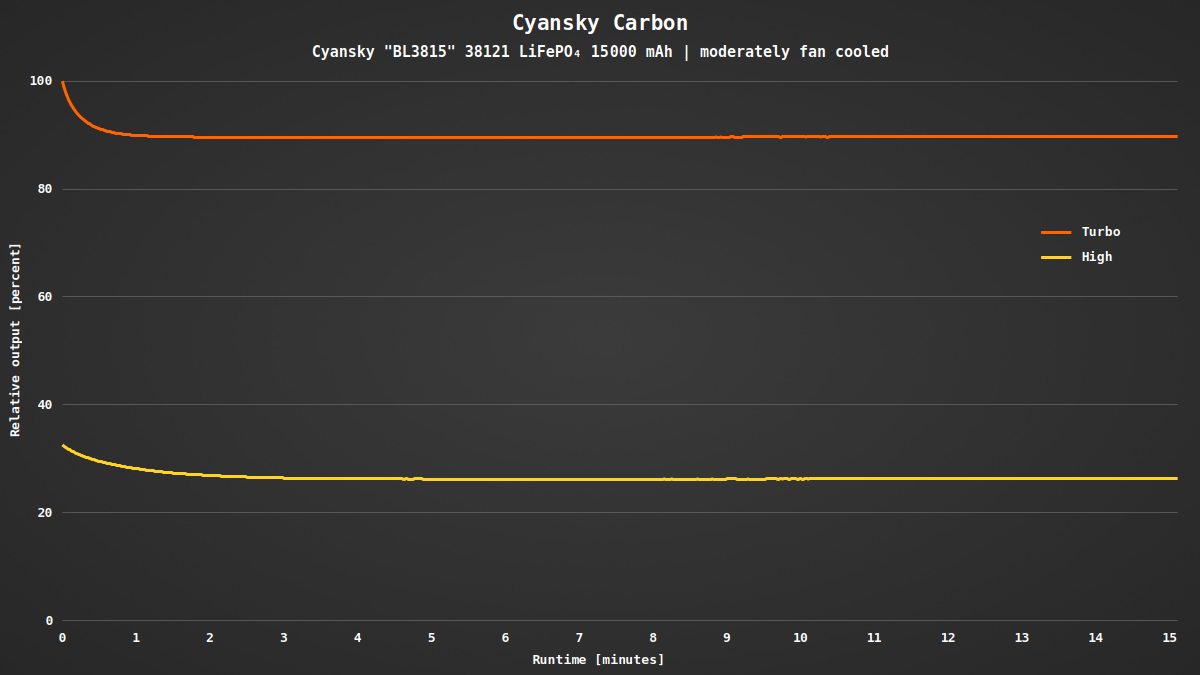
Afterwards, however, you can clearly see how the brightness gradually decreases. It follows the discharge curve of the LiFePO₄ battery pretty closely. After all, there is actually no stepdown for four hours, although it does not deliver 2000 lm at this point.
In contrast to Li-ion batteries the discharge curve for LiFePO₄ batteries is quite flat, which limits the drop in brightness (example of a Li-ion battery).
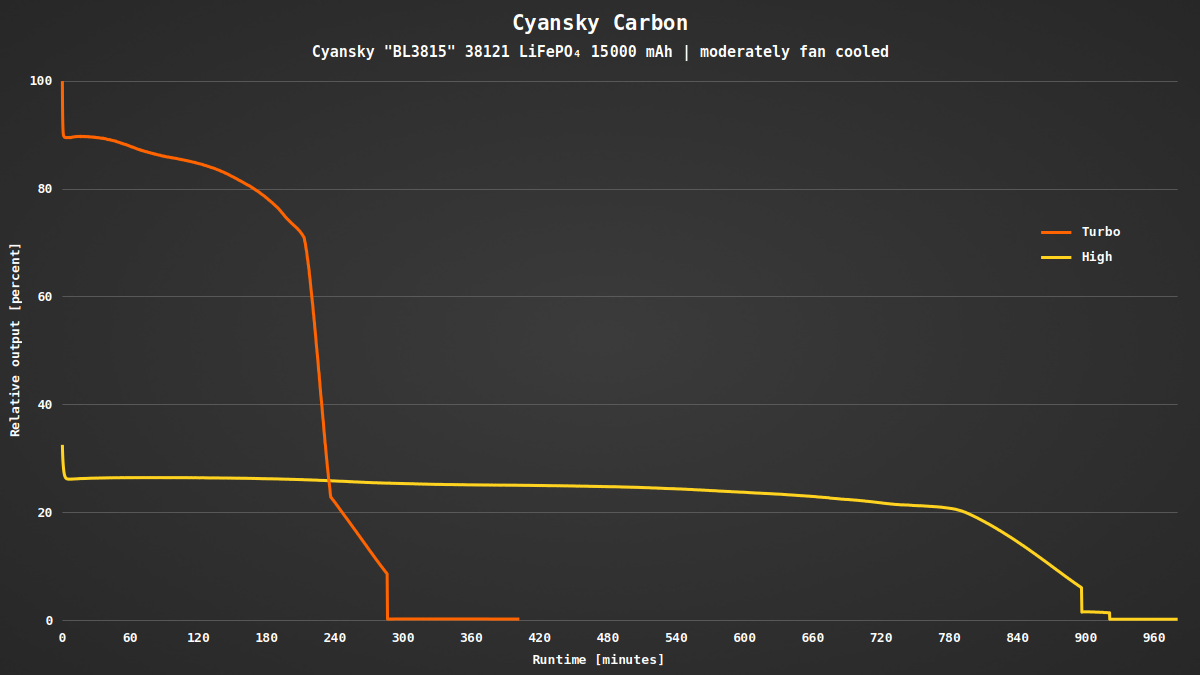
Testing with an oscilloscope shows that the brightness is regulated by PWM at 20 kHz. Therefore it appears to be a simple direct-drive driver with a FET, like it is usually found in inexpensive flashlights due to its simplicity. For a flashlight in this price range I had rather expected a boost regulator (with the four LEDs in a 2S2P configuration, for example). This would allow 2000 lm to be kept constant until the battery is almost discharged.
PWM (here at High):
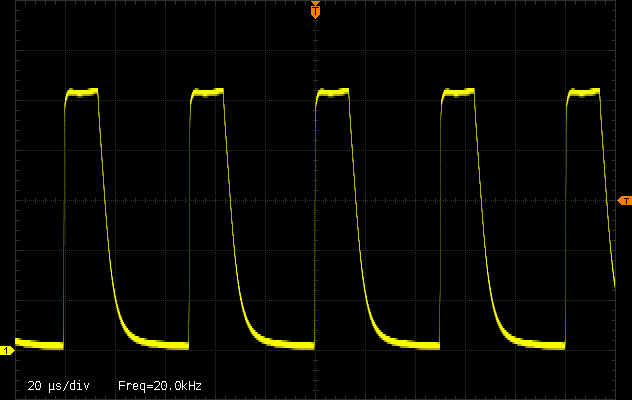
Interestingly the PWM is even used in turbo. The LEDs would probably survive a complete direct drive. In the end it doesn’t really matter as the brightness doesn’t remain constant anyway.
If the battery voltage drops below 2.50 V, the flashlight switches off to prevent deep discharge of the battery.
Conclusion
The description of the Cyansky Carbon sounds tempting! Constant brightness of 2000 lm for four hours and a modern LiFePO₄ battery, which you hardly ever find in flashlights. Plus practical functions such as the integrated fast-charging via USB-C, a charge level indicator with five separate LEDs and a powerbank function.
All of this joy is somewhat diminished when you look at the rather simple direct-drive driver or the slightly greenish SST-20 LEDs, for which there would have been better alternatives.
And yet the Cyansky Carbon is a good choice in some situations: Even if it is not able to maintain the brightness perfectly, it achieves roughly 2000 lm for around four hours without excessive heat. It is quite suitable as a searchlight for longer missions at distances of around 50 m. It is also currently available for pre-order via Kickstarter at a very attractive price.
Got curious? The Cyansky Carbon is now available for pre-order on Kickstarter!